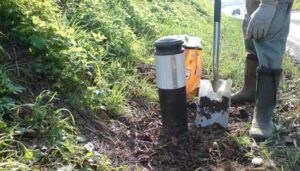By DR CHRIS CHEESEMAN Retired head of wildlife diseases Central Science Laboratory
“I HAVE spent the major part of my 42 year career as a wildlife ecologist studying bovine TB in badgers.
I have taken a close interest in the recent announcement by the Assembly Government to implement measures in West Wales designed — they say — to eradicate the disease. The decision to include badger culling as part of this exercise is perverse. I have no political agenda or vested interest. I am just a retired scientist who is anxious that people have the necessary facts to form their own opinion.
There is no doubt that badgers are a reservoir of bovine TB, and that they may transmit the disease to cattle. Equally, cattle provide a reservoir of infection and transmit the disease both within and between herds and — importantly — to badgers. As far as we know, the disease is not a threat to badger populations. Transmission of TB bacteria from badgers to cattle, and vice versa, may take place in and around farm buildings, or in fields, by contaminated excretions.
Bacteria can survive in the environment for days or weeks, depending on the conditions. Cattle are regularly tested to identify TB-diseased animals, which are removed from the herd by slaughter. Unfortunately, the test fails to identify a significant number of infected cattle which remain in the herd, prolonging the infection with risks of spread to other cattle and other farms through cattle movement.
When the involvement of badgers was first recognised in the 1970s, the Government culled badgers as a hopeful solution. It didn’t work. The trend over the last few decades has been an inexorable rise in cattle TB incidence. This rise is partly due to deficiencies in cattle testing and the undisclosed reservoir of infection in cattle and partly to infection from badgers. Several modifications to the badger culling regime were made to try to make badger culling work, but to no avail.
Scientific evidence was lacking, and the controversy over whether to cull badgers was finally addressed in 1998 by the introduction of a scientific trial in England, where two strategies were evaluated. So-called “reactive” culling strategy, where badgers were removed on and around farms where TB outbreaks had occurred in cattle, made cattle TB incidence RISE by 25 percent because of a perturbation effect. This is where disease spread is actually exacerbated by culling. The strategy was immediately abandoned.
Effects “Proactive” culling, where large areas were trapped once a year for five years, produced unexpected results. In the core of the area, cattle TB was reduced by around 25 per cent, while on the edge it rose about the same amount, again due to perturbation. Both the positive and negative effects have diminished since culling stopped.
The latest analysis of these results led scientists to conclude “badger culling is unlikely to contribute effectively to the control of cattle TB in Britain”. So what has led the Assembly Government to include badger culling in their pilot study? To put in place improved cattle control measures is sensible and necessary, but the scientific evidence shows that badger culling could make things worse.
The expressed view that the Welsh approach will provide valuable scientific evidence for future policy development is false; it will do nothing of the sort. Any effects of the badger culling or cattle measures will be impossible to tease apart. It is like taking two medications for the same illness. One might make you better and the other might make you worse, but you have to keep taking both because you don’t know which is beneficial. How will the Assembly Government take the results of their pilot study forward in future, assuming it goes ahead and there is some small net benefit?
The Assembly Government hopes for a minimum nine per cent improvement in cattle TB, but only after five years of culling and with a recognition that the disease incidence could be worsened in the interim. The financial costs of culling will certainly exceed any savings achieved by an appreciable margin.
Culling will NOT eradicate TB in badgers in the pilot area; it will actually increase the prevalence of TB in the residual badger population. The Assembly Government says it “will take preventative action to stop badgers in the area from becoming re-infected”. This statement is at best naïve and at worst deliberately misleading.
The sensible and sustainable way forward is through vaccines, improved cattle TB testing, and better cattle husbandry and biosecurity. I question the sense of a disease control initiative that can be guaranteed to geographically spread the disease; if I was a farmer on the edge of the proposed culling area, I would be seriously worried about the increased risk of cattle TB outbreaks that will result. How anyone can contemplate doing something that might make the situation worse is beyond me.”
Published in the South Wales Evening Post, March 15, 2010



